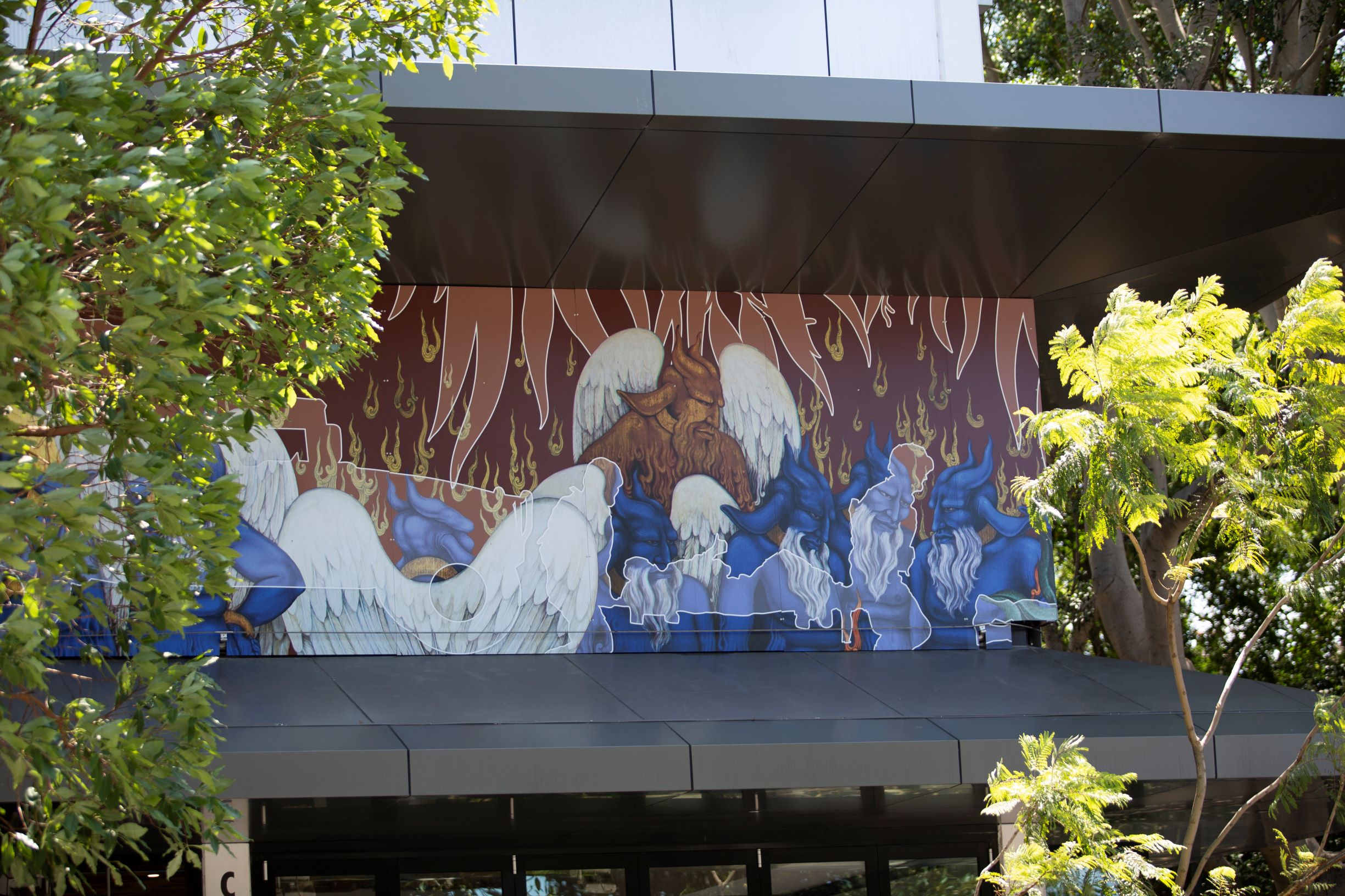
Every War is Defeat is part of UNSW’s Facing Equality Project that aims to confront and shift forms of unconscious bias.
Born and raised in Pakistan, Khadim Ali did not have access to television or social media. Instead, the artist’s grandfather used to sing to him from the Shahnameh, a book of poems by Persian poet Ferdowsi, and show him the miniature illustrations on its pages. These were his first art lessons, UNSW Art & Design alumnus says.
“As a child, listening to Shahnameh, I always considered myself [like the] hero Rustam and would make wooden swords and fight the fictional enemies,” Mr Ali says.
This focus on defeating evil would become a major inspiration for his work.
The UNSW Galleries will feature Mr Ali’s mural Every War is Defeat on its Oxford Street frontage for the University’s Facing Equality project. Facing Equality is an initiative of the UNSW Grand Challenge on Inequality, led by Professors Rosalind Dixon and Richard Holden. The project recognises inequality as one of the critical issues facing society today and aims to confront and shift forms of unconscious bias, through championing the ethos 'you cannot be what you cannot see', by displaying works created by diverse alumni role models.
Mr Ali grandparents, who are of Afghanistan Hazara heritage fled to Pakistan in the 1890s to escape the genocide of the Hazara people by the government of the time. For Hazaras the persecution continued for years and the recent ones at the hands of Taliban and Al-Qaeda.
The demon, which features prominently in Mr Ali’s work, has come to represent the demonization of the refugee – the Hazara by the Taliban – rather than just “the forces of evil”.
“Previously in my paintings, I referred to the demon as the enemy, symbolising the Taliban and al-Qaeda,” Mr Ali says. “[But] when I went back into the history of the Hazaras I found similarities to the demons mentioned in the Shahnameh and the present life of Hazaras.
“They both are driven from their lands into caves and referred to as animals and violent creatures.”
This realisation that the depiction of good and evil is determined by who is controlling the narrative changed the course of his work.
“[The] demons in the painting have dual meaning,” Mr Ali says, representing his “changing viewpoints through the passage of time”.

The mural at UNSW Galleries, which opened to the public on 8 January, features a series of bright blue demons painted over interlinking walls. In one panel, white stencils of a soldier holding a rifle and a tank poised for action appear superimposed across the demons, seemingly unperturbed by these familiar signs of war. The second panel also features these symbols of war but against demons with angelic wings.
These representations of the human-like demons and the soldier would have been banned under the Taliban regime; depicting living creatures in art and culture, as well as playing music, was thought to idolise the human form.
Mr Ali left Pakistan at the age of 18 and found work as a labourer in Tehran and as a painter of religious murals. He was subsequently deported back to Pakistan when he refused to continue painting these “propaganda” murals. He won a scholarship to study miniature painting at the National College of Arts in Lahore. In 2009, he moved to Sydney and completed a Master of Fine Art at UNSW Art & Design in 2015.
The miniature painting tradition that Mr Ali pays homage to in his work flourished in the 16th Century. He employs the same techniques used to create these miniature paintings in his large-scale works. He also creates intricate rugs weaved with his designs.
“It is essential, in miniature painting, to achieve a great degree of detail with an extremely small brush,” Mr Ali says. “I encountered huge challenges when the size of my paintings extended.”
The larger pieces offer “strategic space to execute [his] ideas” but also provide the challenge of ensuring the “quality of miniature painting” is not compromised.
His work has received international recognition with pieces exhibited in the Guggenheim in New York, the British Museum, the Museum of Contemporary Art and the Art Gallery of New South Wales in Sydney, among others.
